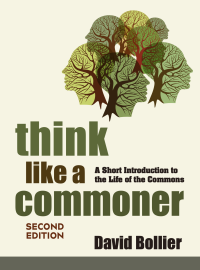Benjamin Barber, the long-time critic of market culture and champion of democratic renewal, has a thoughtful meditation on "the art of public space" in the most recent issue of The Nation.
It is a much-needed reminder of why we need such spaces, but also how each space is peculiar unto itself. He cites, for example, a variety of beloved public thoroughfares in cities around the world that enliven people, community and markets in countless ways: Las Ramblas in Barcelona, the Hackesche Halfe in Berlin, Millennium Park in Chicago, Gunpowder Park outside of London, and so on.
Barber’s piece has a specific goal, however: to prod readers to consider the fate of Times Square, which, as an experiment, has prohibited cars for the past several months. What might we do with this very special space?

Barber reminds us that some commons are inherited and some are invented. In this case, he writes:
"[P]ublic space is not merely the passive residue of a decision to ban cars or a tacit invitation to the public to step into the street. It must be actively created and self-consciously sustained against the grain of an architecture built as much for machines as people, more for commercial than common use. In a word, public spaces are built, not natural; they are the result of constructive intervention rather than laissez-faire disinterest. This is an 'art of public space,’ which requires more than no-car signs, traffic cones, concrete barriers, tables and chairs."
In trying to re-imagine Times Square, Manhattanites have a distinct advantage: a city full of artists. Barber muses that the city might create an open-mini-bandstand or stage for performers; or a life-size chess set; or benches for people to watch each other and the promenaders; or art exhibits by schoolchildren. Barber asks:
"What will fill the empty streets and turn the famous piazza into a true commons, a place whose 'public’ brand reflects the reality of artistic imagination and the public’s ongoing participation in the civic republic? Getting rid of the traffic was the easy part. Now comes the real work: to secure adequate funding, to enlist artists, to fill the newly created residual void."











Recent comments